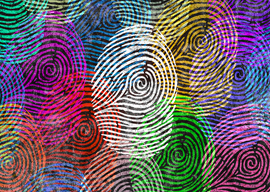
June 06, 2018

Source: Bigstock
Zimmer’s better argument against the genetic reality of race relies upon 46-year-old warmed-over Lewontinism. In 1972, Lewontin argued that 85 percent of total genetic diversity exists among individuals within racial groups, while only 15 percent tracks to geographic ancestry.
This might seem surprising at first, but stop and think about how different people are just within races. Consider the current NBA finals. The Cleveland Cavaliers’ top scorer LeBron James is massive, while the Golden State Warriors’ top scorer Kevin Durant is spindly.
Therefore, ask Lewontin and Zimmer, what possible importance could there be in that measly 15 percent? Just ignore it. “Where ignorance is bliss, ’tis folly to be wise.”
Of course, both basketball stars have significant sub-Saharan ancestry, as do most of their teammates. That 15 percent of genetic diversity that is not random apparently matters in helping cause the famously unequal racial makeup of the NBA.
A thought experiment: Imagine there is an Indian reservation casino where 85 percent of the spins of the roulette wheel are random, but the other 15 percent of the spins come up red if your croupier is an American Indian or black if your croupier is an African-American. Would you like to know that fact?
Yes, you would. A 15-percentage-point edge in making predictions is huge.
It seems to be hard for modern Americans to grasp that genetic diversity within racial groups coexists with genetic distinctiveness among groups. In his book, Reich points to a 2015 study of “The People of the British Isles”:
The study found that the British population was very homogeneous by conventional measures. For example, the classic measure of genetic differentiation between two British populations is about one hundred times smaller than the same measurement of population differentiation comparing Europeans to East Asians.
On the other hand, this genetic distinctiveness doesn’t mean, as is often alleged, that without the vibrant infusion of, say, millions of Pakistanis the British Isles would have been doomed to monotonous human homogeneity. Chaucer, Shakespeare, and Dickens didn’t seem to have much trouble finding interestingly diverse personalities among the natives.
A subtle problem with Lewontin’s observation is that its proponents want you to believe it’s absolutely true, but it actually only works relativistically.
Lewontin’s 15 to 85 ratio for racial groups compared to the whole human race is similar to the genetic diversity ratios found within families compared to their racial group.
On average, two people of the same racial group are about as genetically similar to each other compared to the rest of the world as an uncle and nephew are to each other versus the rest of their racial group.
As you’ve noticed, there is both genetic diversity and similarity within families. For example, the author tends to portray his brother as possessing quite a different personality from him, which no doubt he does in many ways. Yet, in other fashions, the two brothers aren’t really all that different: Carl Zimmer is a genetics journalist for The New York Times, and his brother Ben Zimmer is a linguistics journalist for The Wall Street Journal.
Half full and half empty, heredity and environment, nature and nurture, similarity and diversity, lumping and splitting, absolute and relative … These concepts may seem like warring dichotomies that can’t be reconciled, but they are better understood as useful complements.
As F. Scott Fitzgerald said, “… the test of a first-rate intelligence is the ability to hold two opposed ideas in the mind at the same time, and still retain the ability to function.”
Comments on this article can be sent to the .(JavaScript must be enabled to view this email address) and must be accompanied by your full name, city and state. By sending us your comment you are agreeing to have it appear on Taki’s Magazine.